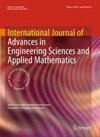Identification of mangrove tree species using deep learning method
IF 0.8
Q3 ENGINEERING, MULTIDISCIPLINARY
International Journal of Advances in Engineering Sciences and Applied Mathematics
Pub Date : 2023-06-01
DOI:10.11591/ijaas.v12.i2.pp163-170
引用次数: 1
Abstract
Artificial intelligence can help classify plants to make identification easier for everyone. This technology can be used to classify mangrove trees. The degradation of mangrove forests has resulted in a 20% loss of biodiversity, an 80% loss of microbial decomposers, reduced C-organic soil, and fish spawning grounds, resulting in estimated losses in the ecological and economic fields for up to IDR 39 billion. The identification of different mangrove species is the first step in ensuring the preservation of these forests. Therefore, this research aimed to develop algorithms and a convolutional neural network (CNN) architecture to classify mangrove tree species with the highest possible accuracy using Python software. The architecture selection for this model includes a batch size of 32, an input image size of 128x128 pixels, four classes, four convolution layers, four rectified linear unit (ReLU) layers, 2x2 max-pooling, and two fully connected layers (FCL). The finding showed that the resulting accuracy from the test was 97.50%, while the validation test was 81.25%, applied to four types of mangrove leaves, including Avicenia marina, Avicenia officialis, Rizophora apiculata, and Soneratia caseolaris.基于深度学习方法的红树林树种识别
人工智能可以帮助植物分类,使每个人都更容易识别。这项技术可以用来对红树林进行分类。红树林的退化导致生物多样性损失20%,微生物分解者损失80%,碳有机土壤和鱼类产卵地减少,估计在生态和经济领域造成的损失高达390亿印尼盾。识别不同的红树林物种是确保这些森林得到保护的第一步。因此,本研究旨在开发算法和卷积神经网络(CNN)架构,使用Python软件以尽可能高的准确率对红树林树种进行分类。该模型的架构选择包括批处理大小为32,输入图像大小为128 × 128像素,四个类,四个卷积层,四个整流线性单元(ReLU)层,2x2最大池化和两个完全连接层(FCL)。结果表明,该方法对4种红树叶片(黄杉、黄杉、尖刺梨和砂索)的准确度为97.50%,验证率为81.25%。
本文章由计算机程序翻译,如有差异,请以英文原文为准。
求助全文
约1分钟内获得全文
求助全文
来源期刊

International Journal of Advances in Engineering Sciences and Applied Mathematics
ENGINEERING, MULTIDISCIPLINARY-
自引率
0.00%
发文量
6
期刊介绍:
International Journal of Advances in Engineering Sciences and Applied Mathematics will be a thematic journal, where each issue will be dedicated to a specific area of engineering and applied mathematics. The journal will accept original articles and will also publish review article that summarize the state of the art and provide a perspective on areas of current research interest.Articles that contain purely theoretical results are discouraged.
 求助内容:
求助内容: 应助结果提醒方式:
应助结果提醒方式:


